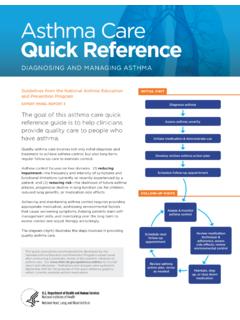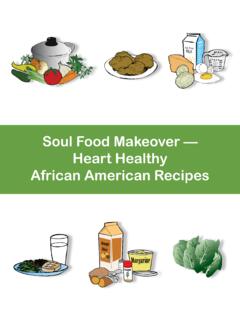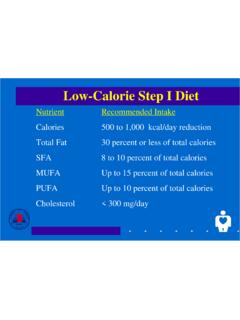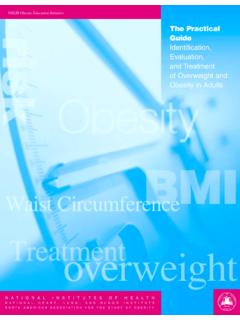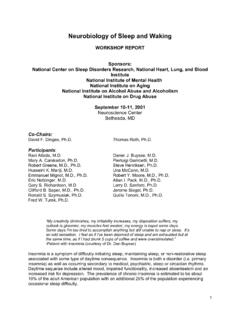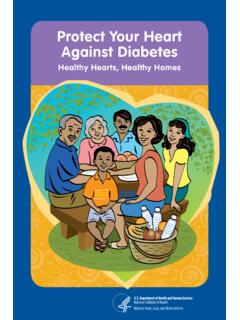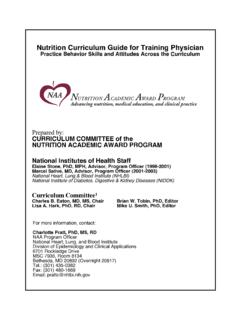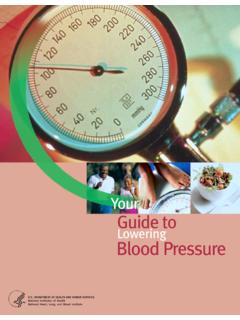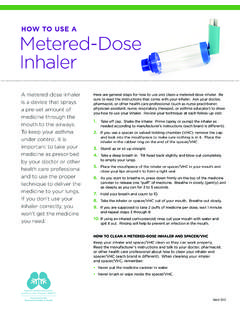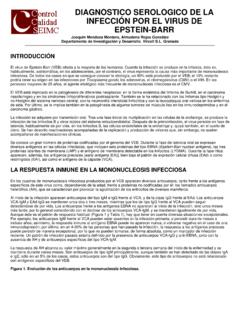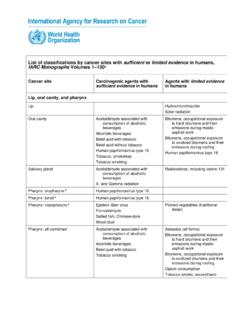Transcription of Anemia Healthy Changes - National Institutes of Health
1 Your Guide toAnemiaAnemiaHealthyLifestyle ChangesPrevent n Treat n Control Iron-Deficiency AnemiaPernicious Anemia Aplastic AnemiaHemolytic AnemaYOUR GUIDE TOAnemiaAnemiaHealthy Lifestyle ChangesPrevent n Treat n Control Iron-Deficiency Anemia Pernicious Anemia Aplastic Anemia Hemolytic AnemaNIH Publication No. 11-7629 September 2011 Contents Introduction ..1 Anemia ..2 ..What Is Anemia ? 2 ..What Causes Anemia ? 4 Making Too Few Red Blood Cells ..5 ..Destroying Too Many Red Blood Cells6 ..Losing Too Many Red Blood Cells7 Signs and Symptoms of Anemia ..8 ..Diagnosing Anemia 10 ..Medical and Family Histories10 ..Physical Exam11 Tests and Procedures ..11 ..Treating Anemia14 Types of Anemia ..16 Iron-Deficiency Anemia ..16 What Is Iron-Deficiency Anemia and What Causes It? .. 17 ..Who Is At Risk for Iron-Deficiency Anemia ? 19 What Are the Signs and Symptoms of Iron-Deficiency Anemia ? ..24 How Is Iron-Deficiency Anemia Diagnosed?
2 25 ..How Is Iron-Deficiency Anemia Treated? 26 ..Pernicious Anemia 28 What Is Pernicious Anemia and What Causes It? .. 28 Who Is At Risk for Pernicious Anemia ? ..29 What Are the Signs and Symptoms of Pernicious Anemia ? . 30 How Is Pernicious Anemia Diagnosed? ..32 ..How Is Pernicious Anemia Treated? 33 ..Aplastic Anemia 34 What Is Aplastic Anemia and What Causes It? ..34 ..Who Is At Risk for Aplastic Anemia ? 36 What Are the Signs and Symptoms of Aplastic Anemia ? .. 36 How Is Aplastic Anemia Diagnosed? ..37 ..How Is Aplastic Anemia Treated?38 Contents Your Guide to Anemia ..Hemolytic Anemia 41 .. What Is Hemolytic Anemia and What Causes It? 41 Who Is At Risk for Hemolytic Anemia ? ..44 What Are the Signs and Symptoms of Hemolytic Anemia ? .. 44 ..How Is Hemolytic Anemia Diagnosed? 45 How Is Hemolytic Anemia Treated? ..48 Research on Anemia ..50 Tips for Preventing or Controlling Anemia ..52 ..Lead a Healthy Lifestyle 52 ..Work With Your Doctor 54.
3 Talk To Your Family 55 A Final Thought ..55 ..To Learn More 56 1 Introduction You ve probably picked up this booklet because you ve read about Anemia and are curious to learn more. Perhaps you ve just been diagnosed, or a family member has been. Or, you ve had Anemia for a while, and you want to learn more about it. People of all ages, races, and ethnicities can develop Anemia at some point in their lives. There are many types of Anemia , and they are linked to a variety of diseases and conditions. Some types of Anemia are very common, and some are very rare. Some are very mild and have little or no impact on a person s life. Some are severe and can even be life-threatening if not treated aggressively. All anemias have one thing in common, though: They all affect your blood, and that affects your overall Health . The good news is that Anemia often can be successfully treated or even prevented. This booklet gives you an overview of Anemia . It starts with general information what causes Anemia , who s at risk, how it s diagnosed, and how it s treated.
4 Then, the booklet goes into more detail about major types of Anemia : iron-deficiency, pernicious, aplastic, and hemolytic. The booklet wraps up with some closing thoughts about leading a Healthy lifestyle, working with your doctor, and talking with your family. These are important things to think about when it comes to Anemia . The booklet doesn t provide detailed information about all types of Anemia . If you re interested in Anemia topics other than the ones discussed here, check out the resources listed in the To Learn More section at the end of the booklet. Introduction 2 Your Guide to Anemia Anemia What Is Anemia ? Anemia is a blood disorder. Blood is a vital liquid that flows through your veins and arteries. Your body contains about 5 to 6 quarts of blood, which are constantly being pumped throughout your body by your heart. Blood carries oxygen, nutrients, and other essential compounds. It also helps regulate your body temperature, fights infection, and gets rid of waste products.
5 When some thing goes wrong in your blood, it can have a big impact on your Health and quality of life. (For more information about blood, see What Is Blood Made Of? on page 3.) In Anemia , your body doesn t have enough red blood cells (RBCs). RBCs are one of the three main types of blood cells. They contain hemoglobin, a protein that carries oxygen throughout your body. When you don t have enough RBCs or the amount of hemoglobin in your blood is low, your body doesn t get all the oxygen it needs. As a result, you may feel tired or have other symptoms. 3 What Is Blood Made Of? Blood consists of liquid and solids. The liquid part, called plasma, is mostly water. Plasma carries essential nutrients, hormones, and proteins throughout your body. Plasma also carries waste products from cells to the kidneys and digestive system to be removed from your body. The solid part of blood contains three types of blood cells red blood cells, white blood cells, and platelets. lRed blood cells (RBCs) are shaped like discs and are slightly indented in the center.
6 They contain hemoglobin, a protein that carries oxygen from your lungs to all parts of your body. Your body depends on oxygen to carry out its functions. Hemoglobin also carries carbon dioxide (a waste product) from the body to the lungs, where you breathe it out. The hemoglobin in RBCs gives blood its red color. lWhite blood cells (WBCs) fight infection. They are part of your body s immune system. Your body makes five different types of WBCs. When you get an infection or other type of illness, your body will make more of the specific type of WBC that s needed to fight that illness. lPlatelets are tiny oval-shaped blood cell fragments that help your blood clot. If you begin to bleed inside or on the surface of your body, platelets gather at the spot and stick together to seal small cuts or breaks on blood vessel walls. Then, proteins called clotting factors join the platelets to form a stable clot that stops the bleeding. Blood cells are made in your bone marrow the spongy tissue inside many of your bones.
7 Blood cells live for various lengths of time. RBCs live about 120 days, and platelets live about 6 days. WBCs have various lifespans. Some types live about 1 day, while others may live a long time. Your bone marrow is always making new blood cells to replace those that have died or are destroyed or lost. Anemia Your Guide to Anemia 4 What Causes Anemia ? Anemia occurs when your body makes too few RBCs, destroys too many RBCs, or loses too many RBCs. Many diseases, conditions, and other factors can cause this to happen. (See What Can Cause Your Body To Make Too Few Red Blood Cells? on page 5, What Can Cause Your Body To Destroy Too Many Red Blood Cells? on page 6, and What Can Cause Your Body To Lose Too Many Red Blood Cells? on page 7 for examples of causes of Anemia .) The causes of Anemia can be acquired or inherited. Acquired means you aren t born with the condition, but you develop it. Inherited means your parents passed on the gene for the condition to you.
8 Sometimes, the cause of Anemia is unknown. 5 Making Too Few Red Blood Cells To make enough Healthy hemoglobin and RBCs, your body needs iron, vitamin B12, folate (another B vitamin), small amounts of other vitamins and minerals, and protein. You get these nutrients from the foods you eat. Your body also needs a proper balance of hormones, especially erythropoietin, a hormone that boosts RBC production. What Can Cause Your Body To Make Too Few Red Blood Cells? Acquired Causes Inherited Causes l Folate or iron deficiency from poor diet l Demand for RBCs outstrips supply l Some cancers ( , leukemia, lymphoma, and multiple myeloma) l Toxins ( , pesticides) l Radiation and chemotherapy treatmentsfor cancer l Some viral infections ( , hepatitis and Epstein-Barr) l Some antibiotics and medicines for rheumatoid arthritis l Autoimmune disorders ( , lupus) l Pregnancy l Fanconi Anemia l Shwachman-Diamond syndrome l Dyskeratosis congenita l Diamond-Blackfan Anemia l Amegakaryocytic thrombocytopenia Anemia 6 Your Guide to Anemia Your body s ability to make RBCs can be affected by acquired or inherited conditions.
9 For example, having a poor diet may prevent you from getting the nutrients you need to make hemoglobin and RBCs. Some people have conditions that stop them from absorbing vitamin B12 from food or that make their bone marrow less able to make all three types of blood cells. These conditions can lead to Anemia . Certain chronic (ongoing) diseases such as cancer, HIV/ AIDS, rheumatoid arthritis, chronic inflammatory diseases, and kidney disease also can harm the body s ability to make enough RBCs. Destroying Too Many Red Blood Cells Sometimes, RBCs are destroyed before they reach the end of their natural lifespan of about 120 days (a process called hemolysis). RBCs may be destroyed in such large numbers that the bone mar row can t make enough new RBCs to keep up. Hemolysis can be caused by an acquired or inherited condition. Certain diseases or infections, such as lupus or hepatitis, are exam ples of acquired conditions that may cause your body to destroy too many RBCs. What Can Cause Your Body To Destroy Too Many Red Blood Cells?
10 Acquired Causes Inherited Causes l Immune hemolytic Anemia (immune system makes antibodies against RBCs or medicines, leading to RBC destruction) l Physical damage to RBCs l Paroxysmal nocturnal hemoglobinuria l Infection ( , malaria) l Sickle cell Anemia l Thalassemias l Hereditary spherocytosis l Hereditary elliptocytosis l Glucose-6-phosphate dehydrogenase (G6PD) deficiency l Pyruvate kinase deficiency Anemia 7 Examples of inherited conditions that make your body destroy too many RBCs include certain blood diseases and autoimmune disor ders. These diseases cause your body to make antibodies (proteins made by the immune system) that destroy the RBCs too early. Another condition, in which a person lacks the enzyme glucose-6-phosphate dehydrogenase (G6PD), also can lead to Anemia . Without this enzyme, the RBCs can break apart and die before the end of their usual lifespan. Losing Too Many Red Blood Cells The third main way in which people develop Anemia is through blood loss.
